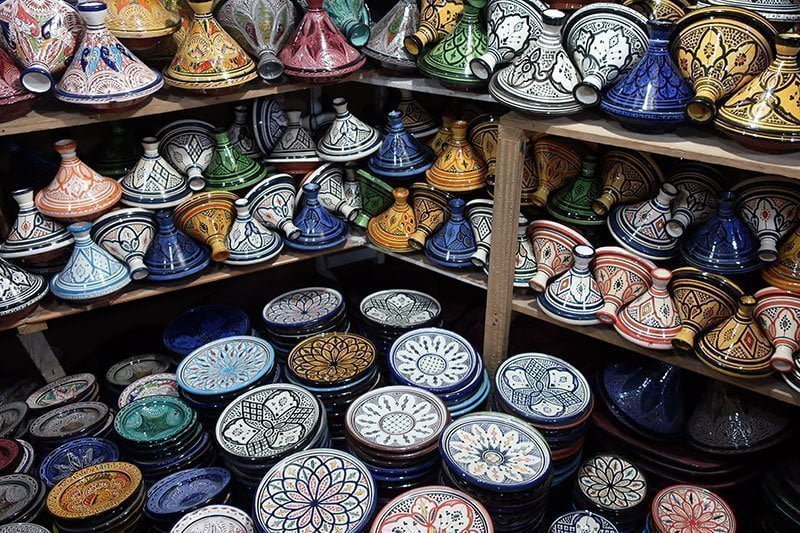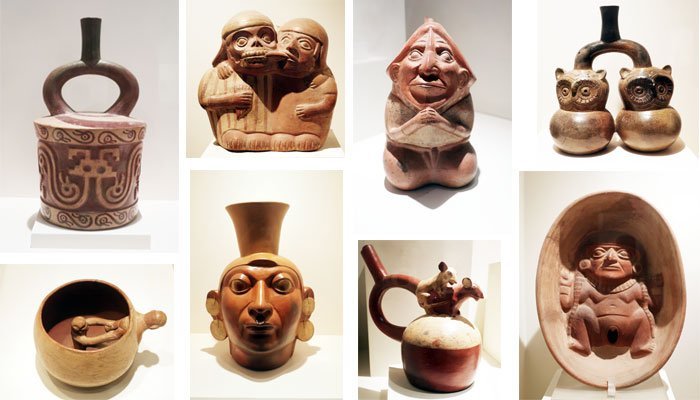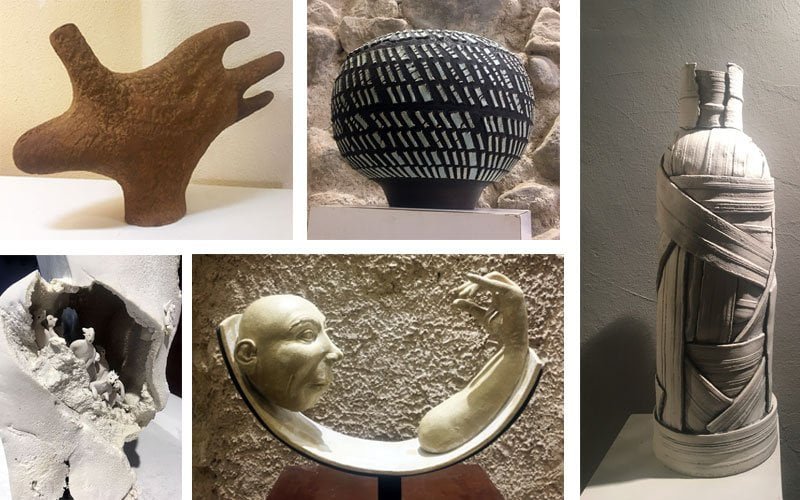At first glance, there isn’t a lot of tourist appeal to Safi. Located on the rugged Atlantic Coastline, Safi never became a popular seaside town for sunbathers and surfers. There is a large, industrialized fishing port with sardine canneries, textile plants and a chemical phosphate plant just south of the city. In front of the old town large containing walls and the railway block access to the water. Having been to some of the more popular tourist destinations in Morocco, I was not drawn to Safi because of its popularity or natural beauty, but for its pottery!
Taking the road less traveled
I arrived in Safi after dark and I was relieved to find my guest house still had a room available for me. There didn’t appear to be many places open or many more lodging options in town.
In the morning, a delicious breakfast was served on the rooftop terrace. There, I could see the whole town from a privileged, panoramic viewpoint. I could see the Dar Al Bahar meaning “the castle by the sea.” This military enclave was built by the Portuguese during their occupancy in the early 16th century. I also spotted the hillside known as Colline des Potiers, where the bulk of Moroccan pottery is produced.
The Potters’ Quarter
On my walk up to the Potters’ Quarter I was approached by a local artisan who insisted on walking me up the hill, despite me saying I wanted to explore on my own. Some of the more assertive “guides” don’t easily take no for an answer. After a short tour of the “co-op,” as he described it, I paid his small fee and happily continued to explore on my own.
Throughout the rest of the morning, all of the potters and shop owners I encountered were kind, welcoming and generous with their time. They were happy to open their doors and talk about their work.
Safi Pottery
Moroccan red clay is quarried from the Safi region and much of it is processed, thrown and fired on Colline des Potiers. Most potters still use traditional wood firing kilns, while some have updated to electric and gas kilns.
Typical Moroccan pottery includes plates, bowls, dishes, vases and the tangine. A tagine is a unique, funnel shaped pot used to cook traditional stews.
The designs used on Moroccan pottery are influenced by Berber and Islamic art, which was previously influenced by Phoenician, Roman and Byzantine designs. Each piece is painted by hand using modern multicolored designs as well as traditional patterns.
If you’re interested in learning more about the different styles found throughout the country, visit the National Museum of Ceramics in Safi. It’s a nice walk up to the Kechla, another fortress built by the Portuguese. There you can find well-preserved examples of traditional Moroccan Pottery and explanations of the their history and techniques.
I highly recommend visiting Safi to people who love pots. There’s a lot to learn and it’s a great alternative to the more popular tourist destinations. If you enjoy the laid-back vibe in Safi, I can also recommend Oualidia. About an hour north of Safi, it’s a small coastal village located next to a protected natural lagoon.







I found a piece of safi pottery with a signature that I would like to send you a picture of so you can tell me how old it is and the value please…..
christian ward
Tucson,Arizona
520 -250 -7694
Hi Christian, I’ve traveled to Safi just once and I’m certainly not an expert. I’m sorry I’m not able to help you with that. Best wishes, Amelia
Hello Christian,
You can email me a picture, I’ll be happy to help,
I am a native of the Safi.
Yacine
Chouaiby@yahoo.fr
Fantastic, thanks for your offer to help Yacine!